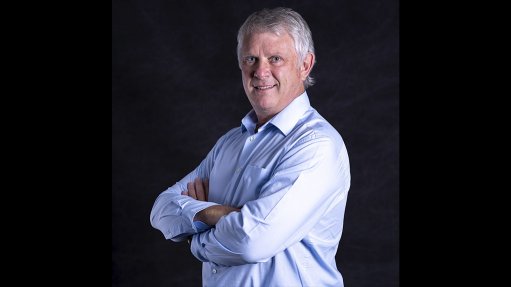
Wynand Marx, CEO at BBE Group
By Wynand Marx, CEO at BBE Group
The core business of mines is to extract ore safely in line with market demand and forecasts, stockpile levels, processing capacity, transport and hoisting capacity, as well as the life-of-mine production profile. This requires certain enablers, such as adequate ventilation systems, to be in place to make this possible. However, many mines often consider these enablers to be a constraint to their operations and business plan, instead of a support.
Mine ventilation provides a flow of surface air to the underground mine workings of sufficient volume to dilute and remove dust and noxious blasting and diesel machine exhaust gases, typically nitric oxide, sulphur dioxide, methane, and carbon dioxide, while also regulating the temperature.
Ventilation is therefore key to ensuring a safe and healthy working environment that promotes the wellness of the workforce, while minimising the risk of mining-related illnesses such as heat stress and silicosis. Ventilation systems are also central to ensuring the optimal physical and cognitive ability of the workforce for maximum productivity without any health impact. These systems must also provide favourable operating conditions for equipment by removing heat and dust.
Ventilation seen as a constraint
Unacceptable workplace conditions can result in ventilation related work stoppages when blast fumes are not cleared within the re-entry period, or when temperatures or noxious gas levels exceed defined limits. These are constraints that could prevent mines from achieving their production targets, resulting in mines rightfully placing the blame on the limitations of the ventilation system.
In addition, a mine ventilation system is an expensive enabler, especially from an electricity cost point of view as it can account for up to a third of a mine’s operating cost.
At the same time, the ventilation system is significant to manage and maintain and could potentially hamper the core business of ore extraction when it is under-designed or fails. Not only does it require a considerable engineering team effort to design, build, manage and maintain the ventilation systems, if under-designed, there is often no quick fix.
Avoiding ventilation constraints
To avoid ventilation constraints and balance productivity and ventilation, mines should ensure that the ventilation design function is fully integrated with the mine planning and design process. Ventilation has the ability to influence mining parameters such as concentration of mining, schedule, production, excavation layouts and sizing as well as diesel fleet limits.
In the past, ventilation teams faced the challenge of not being fully involved in an iterative mine design process. They were typically given a mine design and tasked to ventilate it, potentially putting the ventilation team on the back foot.
In recent times, mine designs increasingly have to prioritise ventilation considerations, mainly due to mines producing at higher rates and/or from deeper orebodies.
Ultimately, if the mine planning and management processes embrace ventilation as an enabler, the mine will reap the benefits, but equally, if ventilation is not adequately planned, integrated and managed it remains a constraint. The benefits of a well-designed mine ventilation system by far outweighs the effort and cost of designing, installing and managing it.
By engaging a ventilation specialist with the adequate experience and knowledge, a mine can have a ventilation system designed which enables unconstrained mining as planned. Mining ventilation specialists have ample experience from around the globe and can leverage it to help mines design effective and efficient ventilation systems for the life-of-mine.